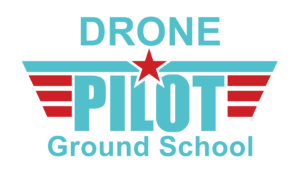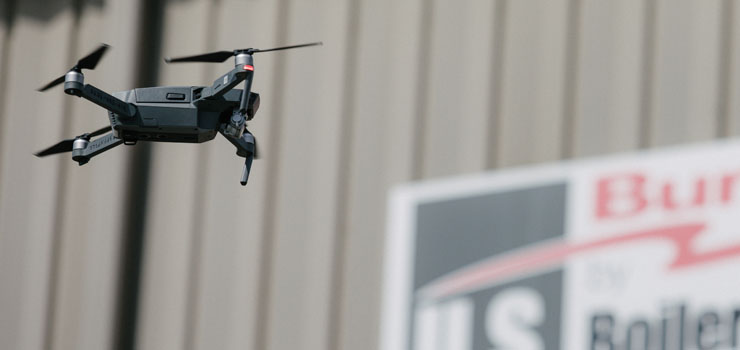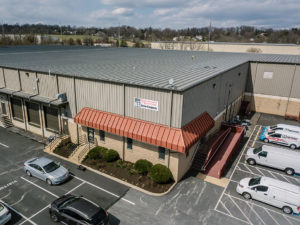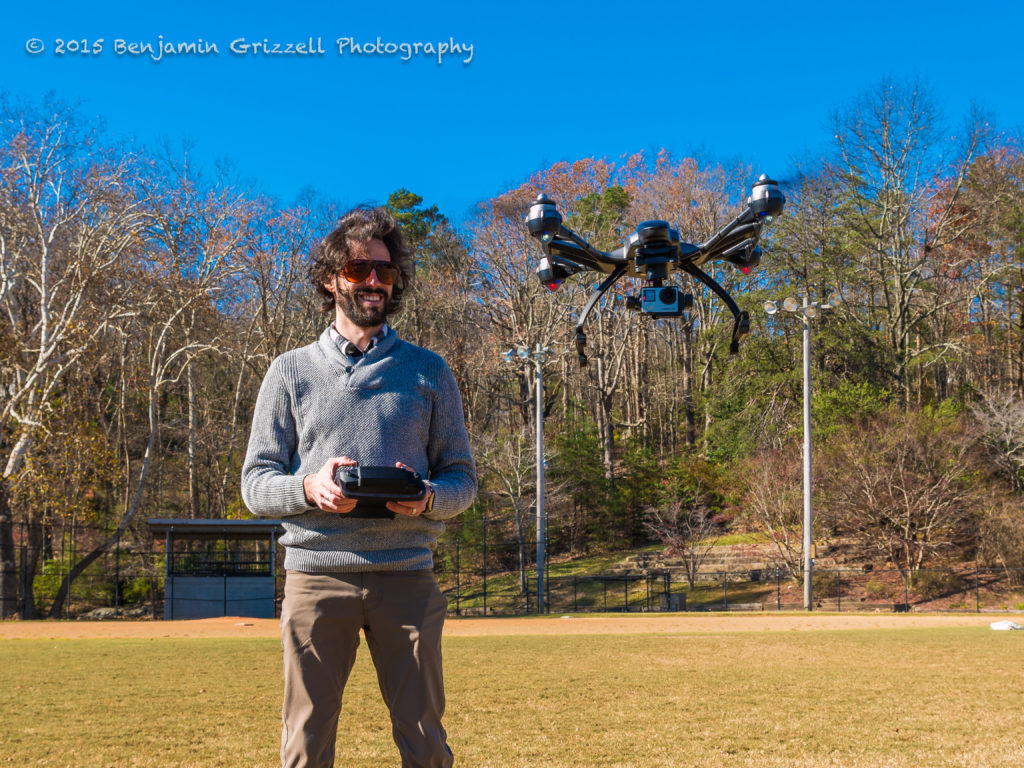Drone, Unmanned Aerial Vehicle (UAV), Small Unmanned Aerial System (SUAS)… Call them whatever you like, but they’re popping up everywhere, pun intended. And while your kids might own one, they’re not just playthings.
When drones most often make headlines, it’s either something recreational (like drone fishing – Google that and thank me later) or obnoxious and illegal. Unfortunately, the media pay less attention to the good that drones are doing, and there’s plenty of this to talk about.
Some of you have no doubt already flirted with the idea of using UAVs commercially. Maybe you’ve even taken steps toward doing so. The number of trade professionals that are finding them extremely useful increases daily. The Federal Aviation Administration (FAA) estimates that 400,000 drones could be in use for commercial applications in the US by 2023.
The proper use of drones can help avoid risk, dramatically reduce jobsite inspection and planning time, and provide the user a perspective that would otherwise be impossible or cost-prohibitive to get.
There are some industries where SUAS technology provides an obvious advantage, like roofing, utility tower service, railroad, surveying, etc. While less obvious, the HVAC and plumbing industry is no exception, especially considering how quickly drone technology is evolving.
With a drone, a technician could take photos of a cooling tower from above, look at exposed piping, packaged rooftop units, condensing units, linests, venting, or inspect chimney integrity without ever leaving terra firma or setting up a ladder. Including images from the aforementioned examples would be fast, easy, impactful way to provide visuals in a bid or proposal. Not to mention the impression you’d leave with a prospective customer when you show up on the job with cutting edge, flying tools.
Above: A drone captures aerial footage and photos of U.S. Boiler Company’s manufacturing plant and engineering lab located in Lancaster, PA.
But drone technology goes beyond standard photo and video. There are plenty of highly-specialized drones already in service. Some models feature a full enclosure, or “cage” which allows the drone to enter confined spaces – such as large ductwork – without risk of brushing into a surface and crashing. These are typically outfitted with bright lights and high resolution cameras. Autonomous flight, accurate GPS locating, obstacle avoidance, data collection and automatic uploading to the cloud have become commonplace on specialized commercial drones. There are even amphibious and submersible UAV models.
The possibilities are limitless. Consider the images you could take of a structure with a flying thermal camera. Include that on your heat load calculation! And UAVs can carry even more sophisticated instruments. How about gas detection, measuring electrical current, airflow, etc.? These are all possibilities in the future.
Drones stand to revolutionize work in the trades, and it’s possible – even likely – that in the not-so-distant future, they may become part of trade school curriculum or technician training. Being the only HVAC company in town that has a drone fleet could be a really enticing recruitment tool, especially with the younger generation. Ignoring how they could impact your company moving forward may be unwise.
Unfortunately, nothing is as easy said as done. There are regulations governing how UAVs are used commercially. Lucky for you (and for me) there are people and programs that can help you quickly become a licensed commercial drone operator, and even lead you in the right direction when it comes to the business side of things.
It’s very important to note that, in order to use drones commercially, an operator must become an FAA licensed remote pilot. Failure to comply can result in serious consequences. Please do not take this lightly.
Through local test facilities, the FAA administers a timed, multiple-choice exam. Upon passing, the FAA issues a license card much like a driver’s license.
Online training, simplified
Some time ago, I decided that I wanted to be ahead of this tech curve, and not trailing behind it. I’ve regretted ignoring trends and not jumping on the tech wagon earlier on multiple occasions (the one that really hurts is Bitcoin, LOL).
 So I decided that drones shouldn’t be on that list of regrets, and found www.DronePilotGroundSchool.com and began my training to become a licensed and insured drone pilot. Had I done more research before signing up for the work-at-your-own pace program, I might never have started. The list of things you need to know can make your head spin. Luckily, after completing the training, I can tell you without hesitation that getting licensed falls squarely in the “if I can do it, anyone can do it” category.
So I decided that drones shouldn’t be on that list of regrets, and found www.DronePilotGroundSchool.com and began my training to become a licensed and insured drone pilot. Had I done more research before signing up for the work-at-your-own pace program, I might never have started. The list of things you need to know can make your head spin. Luckily, after completing the training, I can tell you without hesitation that getting licensed falls squarely in the “if I can do it, anyone can do it” category.
I can’t say my feeling would be such if I’d have attempted it solo – that is, taking the test preparation head on without any sort of structured training. The training offered by Drone Pilot Ground School is both extremely thorough and super user-friendly.
Among many other things, the 60-question FAA test you need to pass in order to get your license includes regulations, the effects of weather, radio communication procedures, airport operations, use of pilot information services, micrometeorology, emergency operations, comprehension of the National Airspace System (airspace classes), how to read sectional charts, aeronautical decision making and aircraft inspection.
If you’re thinking, “Wow, I need to know a lot of the things that an airplane pilot knows,” you’re right. You do. It sounds much more daunting that it is, and honestly it’s a lot of fun. I understand vastly more about aviation now than I ever thought I would, and consequently, airline travel has become more enjoyable.
The training is broken into digestible segments, with plenty of practice quizzes and tests along the way. Alan Perlman and his team opened up enrollment to Drone Pilot Ground School back in July 2016, and they continue to update and refine the program. He set out to create the most intuitive, simple-yet-effective commercial drone training program available, and, in my opinion, succeeded. It’s the reason that Drone Pilot Ground School can boast that 99% of their students pass the FAA exam .
Above: Alan Perlman, principal course instructor at the Drone Pilot Ground School, is an FAA-certified drone pilot and logs flight hours on a wide variety of models and reports on drone regulations, new technology, and other industry developments at UAV Coach, which he founded back in 2014 to help new drone pilots break into the sUAS industry.
When he started the course, Alan teamed up with airline pilots, Air Force veterans, drone enthusiasts and lawyers to cover all of the material thoroughly and continue support for students after they complete their test. And I can attest to the fantastic support during and after the training.
Once you’ve passed the FAA exam, Drone Pilot Ground School continues to deliver information that commercial pilots need. There’s a library of videos and documents that cover everything from applying for FAA waivers and the legal side of the business, to insurance and starting a business (it’s good practice to start a separate business for your drone fleet instead of including them in your existing company).
If you want to know more, next month’s issue of the US Boiler Report will feature a Q&A with Alan Perlman.




